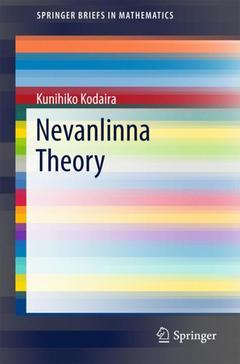Nevanlinna Theory, 1st ed. 2017 SpringerBriefs in Mathematics Series
Auteur : Kodaira Kunihiko

Highly recommendable as a comprehensive introduction to the modern Nevanlinna theory
The last chapter is closely related to Kodaira’s remarkable last paper
Recently, this lecture note was cited as a reference to basic formulas which cannot be found in other places
Includes supplementary material: sn.pub/extras
Date de parution : 01-2018
Ouvrage de 86 p.
15.5x23.5 cm



